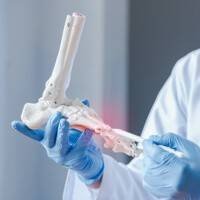A bunion, also known as hallux valgus, is a common foot condition that primarily affects women, with the female-to-male ratio for cases at 10:1. The condition tends to worsen between the ages of 30 and 50. In addition to using orthotic devices and stretching exercises to alleviate symptoms, patients with severe bunions may also be recommended to undergo surgery to correct the deformity and allow them to return to their daily activities.
Bunions are classified as either congenital or acquired. Congenital bunions are related to genetics, such as a family history of larger or wider feet. Meanwhile, acquired bunions are associated with a range of factors, including bone or joint problems, misaligned muscles, rheumatoid arthritis, etc. As the condition progresses, the big toe bends towards the second toe, and a bump or lump forms at the base of the big toe, often rubbing against the inside of the shoe and causing swelling and pain. In severe cases, a bunion may affect the function and strength of the big toe, impacting the person’s ability to walk for long distances and exercise, and even causing deformity to the footwear.
During treatment, the doctor will assess the severity of the patient’s condition through clinical examination and diagnostic imaging. One method of assessment is by measuring the angle of deviation between the big toe and forefoot – if the angle is between 15 and 20 degrees, the condition is considered mild, with symptoms such as foot pain following long periods of walking. If the angle is between 20 and 40 degrees, the bunion is considered moderate, with the big toe already at an angle where it is overlapping the second toe and the forefoot being wider than normal. Angles exceeding 40 degrees indicate severe hallux valgus, with the big toe crossing over other toes – at this point, the condition is at risk of rapid deterioration.
Patients with mild bunions may reduce pain and pressure by wearing comfortable and appropriately sized shoes, which decreases the chance of inflammation caused by friction between the bunion and the inside of the shoe. They may also perform stretching exercises to strengthen the foot muscles and wear toe spacers to alleviate symptoms. However, patients with severe bunions and deformity of the forefoot may need to consider surgical treatment to improve their condition.
During traditional and minimally invasive bunion surgery, tissue around the big toe joint is removed and reconstructed, and an osteotomy is performed with X-ray guidance, where the metatarsal bone or phalanx is cut, realigned, and reconnected. In minimally invasive surgery, only a few small incisions (less than 5 mm each) are made in the foot, so the recovery period is relatively shorter.
There are numerous treatment methods for bunions, each with varying levels of effectiveness and side effects. Patients with questions should consult their physician for more information.





















